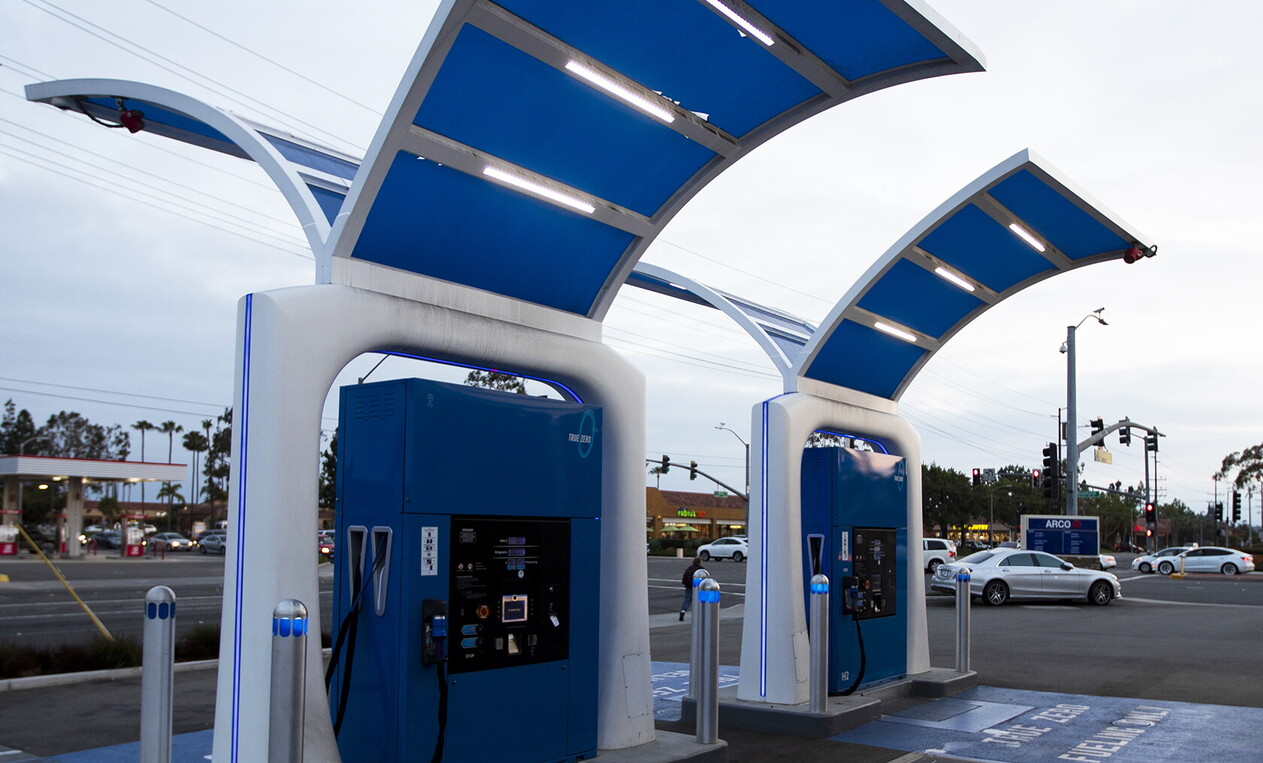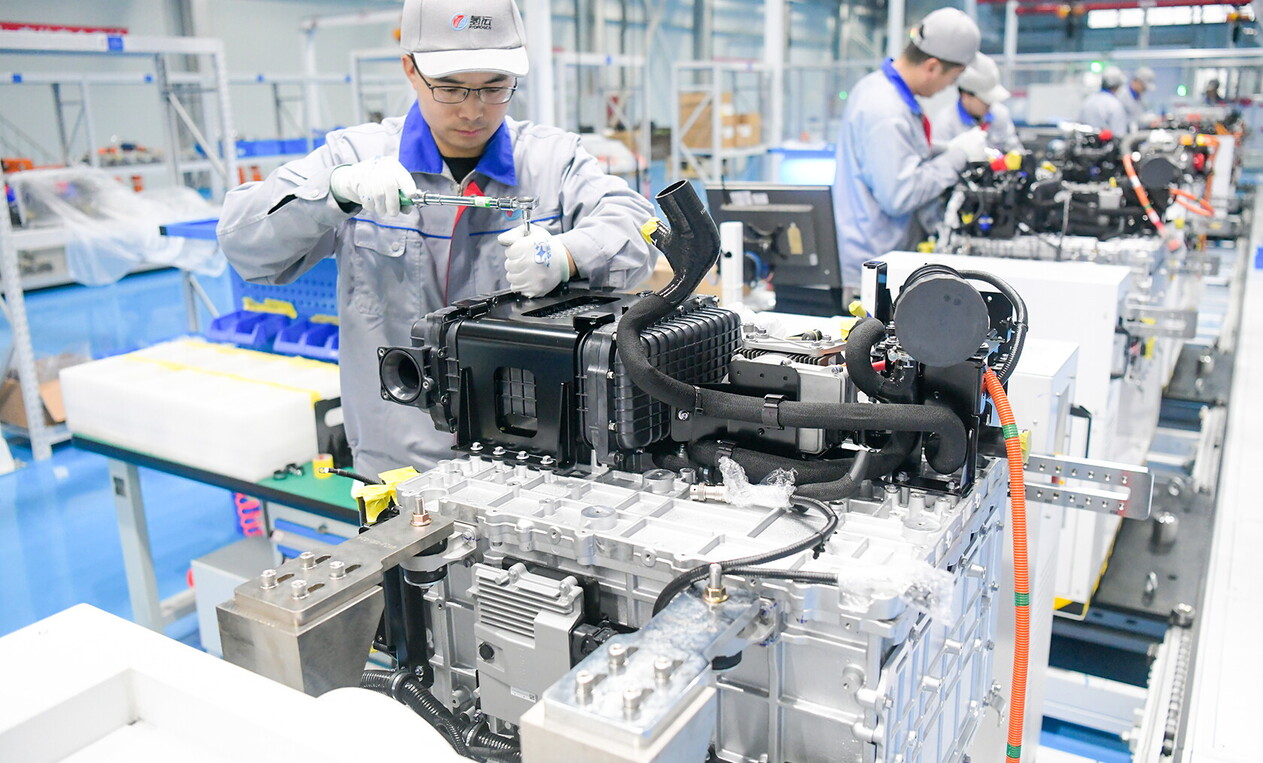
Hydrogen
The hydrogen race between the US & China
While not currently among the leading exporters, both countries are vying for leadership in the hydrogen economy, recognizing its potential both for their domestic energy transitions and for shaping future global power dynamics
17 minAs the global energy system shifts away from carbon-intensive fuels, hydrogen has emerged as a central pillar in strategies aimed at decarbonizing hard-to-abate sectors such as heavy industry, shipping, aviation, and maritime trade. Moreover, hydrogen can also serve as a storage medium to stabilize power grids as the share of electricity generated by volatile solar and wind energy steadily grows worldwide.
Aganist this backdrop, policymakers and experts have long hoped that once the hydrogen market ramps up, it might also fundamentally change the geopolitics of energy trade and flows —promoting energy independence, reducing risky fossil energy relations, and strengthening value-based trade. However, hydrogen is a technological- and industrial-intensive energy source, with significant ramifications in critical mineral value and supply chains, as well as complex logistics. As a consequence, hydrogen has its own geopolitics and the interplay of mineral concentration, technological-industrial competition, transport constraints, and current geopolitical power dynamics will influence hydrogen policy and decision-making along the entire value chain. Actors often still prioritize socioeconomic, geopolitical, and technopolitical considerations over climate priorities when entering the hydrogen race, and their interest and positioning in the future hydrogen economy might differ greatly, depending on these factors.
The hydrogen value and supply chain
The hydrogen value chain is fundamentally different from that of fossil fuels or even renewable electricity, as it presents itself as a complex and interwoven ecosystem —either for the production of gaseous hydrogen or hydrogen derivatives like ammonia. It can be divided into three primary segments (upstream production, midstream logistics, and downstream applications) and one often-overlooked but essential pre-chains segment (industrial components and raw material processing).
Pre-chains, while not directly related to hydrogen or hydrogen products as final good, are particularly relevant for hydrogen production, especially green, as they include vaue and supply chains for raw materials and critical/strategic minerals needed for hydrogen such as nickel, PGM metals, but also silicon and lithium, as well as the very manufacturing process of solar panels, wind turbines, and electrolysers.
The upstream segment includes hydrogen production itself, either from renewable electricity (green hydrogen via electrolysis, yellow hydrogen from nuclear energy), natural gas with steam methane reforming or pyrolysis and carbon capture (blue hydrogen), or traditional steam methane reforming with no carbon capture (so called grey hydrogen).
The midstream encompasses storage, distribution, and transportation infrastructure such as pipelines (up to roughly 4,000 km), ships, liquefaction and shipping terminals, and conversion technologies like ammonia synthesis for long-distance transport (above 5,000 km) while the Downstream segment refers to end-use applications in mobility (fuel cell vehicles, heavy transport), industrial processes (steel, ammonia, refining), and power generation.
Especially the midstream and upstream segment are intervowen: depending on the end-use, hydrogen and hydrogen derivatives have each their own value chain and transport logistics. For hydrogen to be produced either as gas or as derivative and used on site or transported over longer distances, differently complex chemical processes are needed. Industrial clusters either close to ports and their hinterlands or close to final consumption define logistics(power lines, pipelines, ships, liquefaction and shipping terminals, and conversion technologies) and hence reconfigure the economic geography of both industry and energy.
Currently, transport and industrial infrastructure, are often considered the missing link in the market ramp-up for clean hydrogen. Without the capacity to store and transport hydrogen economically and safely at scale —as well as the capacity mass-produce electrolysers, or develop enabling technologies— investments in upstream production and downstream demand remain fragmented, isolated, and uncertain, and the cost of hydrogen —especially from renewables— remains high. To this adds the challenge to extract, process and secure supply of critical raw materials especially needed for the production of green hydrogen.
China and the United States' strategic positioning
China and the United States, given their paramount roles in energy markets and in shaping the global order, see hydrogen as an additional battlefield in the global energy race and in their geopolitical rivalry. In fact, both are vying for leadership in the hydrogen economy, recognizing its potential not only to drive domestic energy transitions but also to shape the contours of future global power. Yet, the race to hydrogen dominance is neither linear nor uniform; as shown, it unfolds across complex and interwoven value and supply chains, where both countries take different but crucial roles.
Neither China nor the United States is currently positioned —or willing— to emerge as a major hydrogen exporter, though both could become pivotal in shaping regional hydrogen economies and eventually a gloabl hydrogen market. Particularly, midstream bottlenecks —along with domestic strategic priorities— limit their influence over international hydrogen flows —a role currently being pursued more aggressively by countries like Australia, Saudi Arabia, and the UAE, which aim to become key hydrogen exporters (mainly green or blue hydrogen in ammonia form) to East Asia and Europe.
Yet, the U.S. and China’s geopolitical priorities, together with peculiar technological-industrial capabilities and energy resource bases, give them key levers to influence the hydrogen market ramp-up and its geopolitics in the coming decades.
China’s strategy: pre-chain and upstream mastery
China’s hydrogen ambitions are grounded in considerations of energy security and energy independence, as well as in its sustainability aspirations and industrial policy. However, its strategic competition with the U.S. fuels the race for technological and market leadership in the hydrogen sector as well. By 2025, the country aims to produce between 0.1 and 0.2 million tonnes of hydrogen annually from renewable energy, positioning it as both a self-sufficient producer and a potential trade hub.
China's approach to hydrogen is characterized by rapid scaling and strategic integration into broader industrial and environmental policies. The country leads globally in electrolyser manufacturing, with companies like Longi and SinoHytec dramatically expanding production capacities. Particularly, China has established itself as a key player in the global electrolyser market by leveraging its mature manufacturing capabilities in alkaline (ALK) water electrolysis technology, while rapidly catching up in proton exchange membrane (PEM) technology. As a refiner of many raw materials —such as nickel (needed for ALK) and critical PGM metals (needed for PEM)— and as a leading manufacturer of solar panels and wind turbines, China holds the key to future hydrogen production.
Large-scale green hydrogen projects are also underway in renewable-rich regions such as Inner Mongolia and Xinjiang, aiming to decarbonize heavy industries. Moreover, China has been aggressively building domestic hydrogen infrastructure in the heavy transport sector, with over 300 hydrogen refueling stations in operation as of early 2025 —more than any other country. This is complemented by massive public and private investment, guided by the central government's 2021–2035 Hydrogen Development Plan, which targets 50,000 fuel cell vehicles on the road by 2025.
Yet, China's hydrogen economy remains largely domestically focused. Its vast internal market and logistical geography make domestic consumption more attractive than export, while it holds competitive advantages in industrial manufacturing, raw materials processing, and technological know-how. Consequently, in the midstream, the country faces constraints it has no incentives to overcome. Hydrogen is challenging to transport due to its low energy density, and China lacks so far the liquid hydrogen shipping capabilities or export-oriented pipeline infrastructure that would position it as a major global hydrogen supplier.
This domestic orientation aligns with China’s strategic goals of energy security and technological self-reliance as hydrogen is just one of many tools to reduce greenhouse gas emissions while guaranteeing self-sufficiency.
The hydrogen economy is more likely to evolve into a decentralized, regionalized system
The United States: a technological powerhouse with evolving priorities
The U.S. could play a special role as a potentially influential “prosumer” (both a producer and consumer) in the future hydrogen world. Compared to China, the United States has adopted a more fragmented but equally technologically agnostic and highly innovative approach to hydrogen, particularly under the previous Biden administration’s climate agenda.
Over the past years, the Bipartisan Infrastructure Law and the Inflation Reduction Act (IRA) catalyzed a hydrogen boom, offering generous production tax credits (up to $3/kg for green hydrogen) and funding for “hydrogen hubs” across the country. The U.S. excels in upstream innovation for green hydrogen, as it is home to leading PEM electrolyser technology firms. It has also targeted blue hydrogen production, leveraging abundant natural gas resources and expertise in carbon capture technologies.
Here, projects in the Gulf Coast region have explored opportunities for hydrogen exports, particularly to Europe and Asia. During the Biden Administration, projects in Texas, Louisiana, and Appalachia began laying the groundwork for large-scale blue hydrogen production. The U.S. hydrogen strategy, released in 2023, envisions domestic production of 10 million tonnes of clean hydrogen annually by 2030, increasing to 50 million tonnes by 2050—potentially exceeding long-term domestic demand and leaving room for exports to allies.
The downstream sector has also gathered momentum, with hydrogen being integrated into ammonia and methanol production, and new hydrogen-based steelmaking pilot projects. American automakers lag behind their Asian counterparts in fuel cell vehicles, but partnerships with logistics and heavy-duty transport firms (like Nikola and Cummins) are advancing niche applications.

However, similar to China, the U.S. lags in midstream infrastructure and shows limited interest in investing in H2-ready transport systems. Only a few dedicated hydrogen pipelines exist —mostly in the Gulf Coast region. Liquefaction and export terminals for hydrogen or its derivatives (like ammonia) remain limited, and the domestic hydrogen refueling network is sparse compared to Europe or China.
Moreover, currently, the new Trump administration has redefined energy and climate policy priorities, focusing on LNG rather than hydrogen production and exports, and de-prioritizing climate-mitigating technologies like green hydrogen. President Trump’s IRA funding pause —while not impacting the tax credits— has jeopardized billions in hydrogen grant funding and loans to major producers such as Plug Power. Meanwhile, higher tariffs on solar and wind components and Chinese steel will further raise costs for upcoming renewable projects, essential for green hydrogen production.
This may limit the U.S. role as a major hydrogen exporter in the near term, constraining investment in production and transport infrastructure. However, because the clean hydrogen push is also tied to systemic rivalry with China, industrial competition with China and Europe, and efforts to secure critical supply chains, the Trump Administration may still support select hydrogen technologies. In particular, it may favor blue hydrogen production and exports as part of a mercantilist strategy focused on leveraging domestic fossil resources and industrial capacity.
In this scenario, easing environmental concerns and political resistance to fossil-fuel-derived hydrogen —even with carbon capture— would facilitate blue hydrogen exports and related infrastructure investment. This becomes more likely if the global hydrogen race accelerates or if LNG prices fall to a point where blue hydrogen becomes more competitive than LNG and remains significantly cheaper than green hydrogen.
Geopolitical implications for an hydrogen economy
The divergent strategies and positioning of China and the U.S. in the hydrogen sector carry significant geopolitical implications for the emerging hydrogen economy. In particular, the development of hydrogen infrastructure —spanning midstream logistics, industrial pre-chains, and upstream production— is not just a technical or economic undertaking, but a strategic priority with long-term consequences for global energy leadership.
Ultimately, the hydrogen race between China and the U.S. is less about dominating the global hydrogen trade and more about securing technological and industrial leadership in the green economy. Both countries are focused on anchoring upstream and downstream segments of the hydrogen value chain —via domestic production, R\&D, component manufacturing, and vertical integration— while bolstering their geoeconomic resilience and expanding their geopolitical room to maneuver. This is not a replication of the 20th-century oil-export model, but a bid to shape the foundations of future industrial power.
However, this contest is not purely economic. Hydrogen technologies depend on critical raw materials —such as iridium, platinum, and rare earths— and on advanced manufacturing capabilities, including membranes and catalysts. Control over these inputs and technologies offers strategic leverage, arguably more than controlling hydrogen flows or transport infrastructure. In this domain, China holds a clear advantage in raw material processing and electrolyser manufacturing, while the U.S. maintains a lead in innovation and startup activity, supported by its academic institutions and federal R&D programs.
In this emerging geopolitical landscape, hydrogen infrastructure —broadly defined to include not just transport and logistics, but also industrial and manufacturing capacities— serves as both a lever of domestic modernization and a means of projecting international influence and industrial-geopolitical resilience. While midstream bottlenecks may still constrain their export capacity, China and the U.S. remain central to shaping global norms, standards, and supply chains. The evolution of their national strategies and geopolitical postures will not only define their own hydrogen trajectories but also influence the structure and geopolitics of the global hydrogen economy.

Challenges for Europe in the emerging hydrogen race
Unlike the oil market —centralized and dominated by a handful of major producers and chokepoints— the hydrogen economy is more likely to evolve into a decentralized, regionalized system. Technological hurdles, regulatory fragmentation, and high transport costs will favor the rise of regional hubs and bilateral trade corridors over a unified global market.
However, this new energy order is not inherently more stable or cooperative. The U.S.-China competition over hydrogen illustrates how concentrated technology and mineral supply, fragmented value chains, industrial rivalry, and infrastructure bottlenecks heighten the risk of disruption and conflict. Green hydrogen and its associated supply chains are becoming arenas for geopolitical competition over industrial and technological leadership —beyond climate considerations.
Europe’s biggest challenge as a future net importer will be to build a competitive domestic industrial base, secure sustainable access to critical raw materials, promote common standards with strategic partners, and invest in infrastructure cooperation. Without these, it risks remaining dependent and exposed in a fragmented hydrogen economy.

